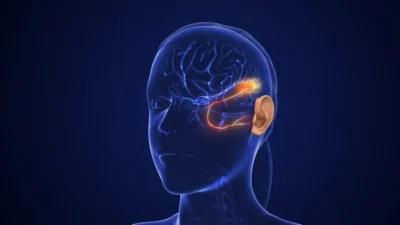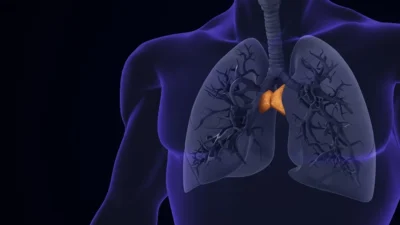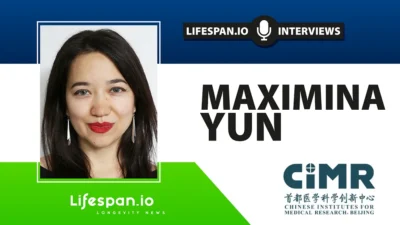A team led by renowned Harvard geroscientists David Sinclair and Vadim Gladyshev has reported successful chemically induced partial cellular reprogramming in vitro. The researchers have also developed a novel cellular rejuvenation assay [1].
Smaller than proteins
Complete cellular reprogramming using the Yamanaka factors was first accomplished more than ten years ago [2]. Those four proteins, collectively known as OSKM, can erase cellular identity, turning the cell into an induced pluripotent stem cell (iPSC). This is accompanied by the reversal of several signs of cellular aging. Later, it was shown that transient induction of these factors can result in cellular rejuvenation without the loss of cellular identity. Experiments in animal models have demonstrated that in vivo partial cellular reprogramming may confer health benefits [3] and even lifespan extension [4].

Read More
While cellular reprogramming has immense potential, many problems remain, including the cancer risk (oncogenicity) of at least one of the factors. Additionally, delivery of genetic material to cells can be tricky and cause complications. This pushed scientists to look for small molecules that would mimic the reprogramming action of OSKM, with some progress achieved in this direction [5].
The authors of this new paper describe how signs of aging in senescent cells can be reverted with several small molecule cocktails according to a novel cellular rejuvenation assay.
The assay
In eukaryotes, what goes in and out of the nucleus is tightly controlled. For instance, transcription from DNA to mRNA occurs in the nucleus, while translation from mRNA to proteins takes place in the cytoplasm. The protein complexes that comprise nuclear pores make sure that this nucleocytoplasmic compartmentalization (NCC) is obeyed.
However, aging or otherwise damaged cells are often associated with NCC deterioration [6]. By tagging proteins that should remain inside the nucleus and those that should reside in the cytoplasm with different fluorescent colors, the researchers were able to measure the extent of this deterioration. According to the paper, this novel NCC assay ‚Äúcan distinguish between young, old, and senescent cells‚ÄĚ essentially in real time and without the need to take the cell apart for analysis.
Senescence can be induced by several stressors. Replicative senescence (which is induced by several dozen cell divisions) is associated with an increase in the cell’s epigenetic age, which is why the authors chose human fibroblasts driven to replicative senescence as their model of cellular aging. Their NCC system reliably distinguished senescent from non-senescent cells. When the senescent fibroblasts were then treated with the OSKM cocktail, the NCC assay was able to discover the resulting signs of cellular rejuvenation.
Rejuvenation without loss of identity
Having established their novel cellular age assay, the researchers turned to screening small molecules to find the ones that can induce OSKM-like rejuvenation. Building on previous research, they tested 80 cocktail variants, eventually narrowing down the field to the six best candidates.
Along with the NCC assay, the researchers used transcriptomic clocks, which assess cellular age by examining age-related changes in the transcriptome. These clocks were trained on mouse, human, and combined data. Senescent cells showed increased transcriptomic age. When applied to senescent cells, all six candidate cocktails caused significant reductions in transcriptomic age, even compared to non-senescent but quiescent cells.
One of the clocks, which is built to estimate chronological age, showed an impressive reduction of over three years after only four days of treatment.

Transcriptomic analysis showed no loss of cellular identity resulting from the treatment. The researchers did not detect any expression of iPSC-specific genes or pluripotency-related genes such as NANOG.
More work ahead
While the results of this study look encouraging, additional work is needed to generalize its findings to other settings and contexts. As the authors note, ‚Äúthis study focused on the physiological rejuvenation and analysis of specific and well-established epigenomic signatures of aging. Whether chemical reprogramming can attenuate or reverse other hallmarks of aging and how effective it is on non-senescent cells and different cell types, tissues, and species, requires additional exploration.‚ÄĚ
Another potential issue is the safety of those small molecules. Many more experiments will have to be done to establish the safety profile and effective dosage. ‚ÄúIt is critical that the safety of chemical rejuvenation cocktails is tested rigorously in mammalian animal models before human trials are initiated,‚ÄĚ the researchers caution.
Literature
[1] Yang, J. H., Petty, C. A., Dixon-McDougall, T., Lopez, M. V., Tyshkovskiy, A., Maybury-Lewis, S., … & Sinclair, D. A. (2023). Chemically induced reprogramming to reverse cellular aging. Aging, 15.
[2] Takahashi, K., Tanabe, K., Ohnuki, M., Narita, M., Ichisaka, T., Tomoda, K., & Yamanaka, S. (2007). Induction of pluripotent stem cells from adult human fibroblasts by defined factors. cell, 131(5), 861-872.
[3] Rodr√≠guez-Matell√°n, A., Alcazar, N., Hern√°ndez, F., Serrano, M., & √Āvila, J. (2020). In vivo reprogramming ameliorates aging features in dentate gyrus cells and improves memory in mice. Stem Cell Reports, 15(5), 1056-1066.
[4] Alle, Q., Le Borgne, E., Bensadoun, P., Lemey, C., Béchir, N., Gabanou, M., … & Lemaitre, J. M. (2022). A single short reprogramming early in life initiates and propagates an epigenetically related mechanism improving fitness and promoting an increased healthy lifespan. Aging Cell, e13714.
[5] Knyazer, A., Bunu, G., Toren, D., Mracica, T. B., Segev, Y., Wolfson, M., … & Fraifeld, V. E. (2021). Small molecules for cell reprogramming: a systems biology analysis. Aging (Albany NY), 13(24), 25739.
[6] D’Angelo, M. A., Raices, M., Panowski, S. H., & Hetzer, M. W. (2009). Age-dependent deterioration of nuclear pore complexes causes a loss of nuclear integrity in postmitotic cells. Cell, 136(2), 284-295.









